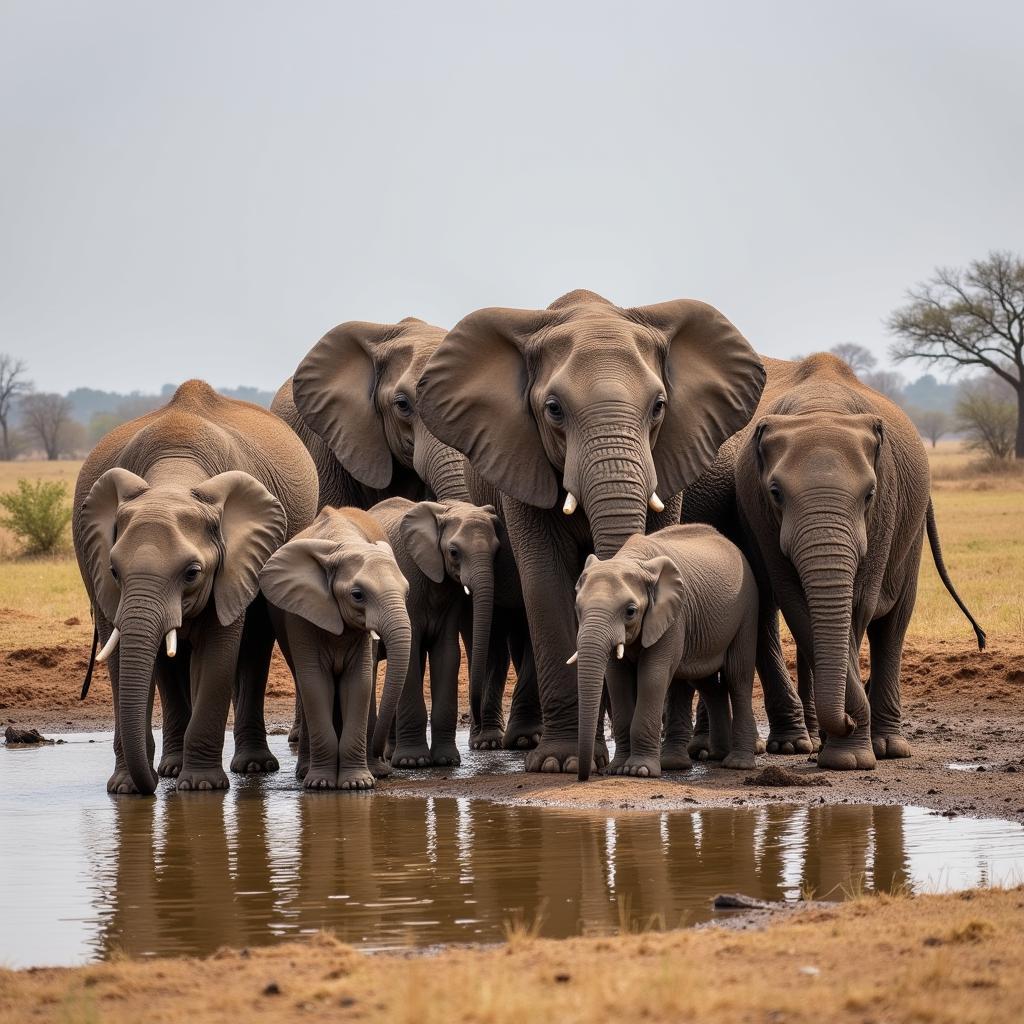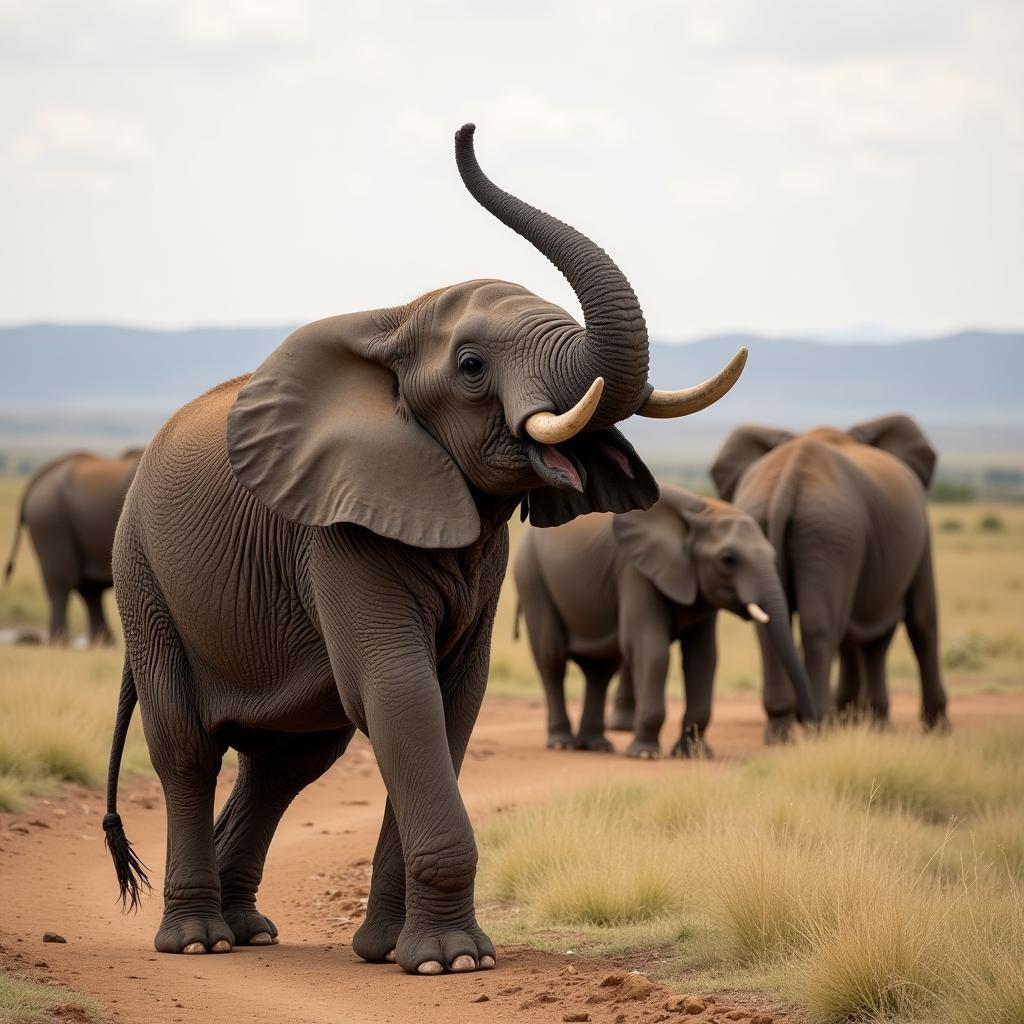The African Elephant Family: A Matriarchal Society
The African Elephant Family is a sight to behold. These majestic creatures, with their towering presence and intricate social structures, captivate the hearts of wildlife enthusiasts worldwide. Led by a wise and experienced matriarch, the family unit is a testament to the power of female leadership in the animal kingdom.
The Matriarch: The Heart of the African Elephant Family
At the heart of every African elephant family unit lies the matriarch, the oldest and most experienced female. This grand dame, often in her fifties or sixties, is the glue that holds the entire family together. She is responsible for making crucial decisions that impact the survival of the family, from navigating long migrations to finding the best feeding grounds.
Her immense knowledge of the land, passed down through generations, ensures the family’s well-being. She remembers the location of vital water sources during droughts and recognizes the subtle signs of approaching danger.
The Bonds that Unite: The Importance of Family in African Elephant Society
African elephants are highly social animals, and the family unit is the cornerstone of their existence. A typical family consists of several related females, their young daughters, and their most recent male offspring. This close-knit group, often numbering between 8 to 12 individuals, relies on each other for support, protection, and companionship.
 African Elephant Family Gathering at a Waterhole
African Elephant Family Gathering at a Waterhole
Young calves benefit immensely from the collective care of the family unit. Older sisters, aunts, and even grandmothers play a crucial role in nurturing and protecting the youngest members. This shared responsibility ensures the calves’ survival and teaches them the essential life skills they need to thrive in the African wilderness.
A Life of Learning: How Young Elephants Grow Within the Family
Growing up in an African elephant family is an enriching experience for young elephants. Under the watchful eyes of their elders, calves learn vital skills such as foraging for food, using their trunks effectively, and navigating their surroundings. The matriarch plays a key role in this educational process, imparting her wisdom and experience to the younger generation.
Playtime amongst the calves is not just fun and games; it’s an essential part of their development. Through play, they develop crucial social skills, learn to communicate effectively, and strengthen the bonds within the family unit.
Farewell to the Family: The Departure of Male Elephants
While female elephants remain with their family group for life, male elephants embark on a different path. Upon reaching sexual maturity, usually around the age of 12-15, young males leave the family unit to navigate the world independently. This departure, while marking the end of one chapter, is a natural and essential part of an African elephant’s life cycle.
 Young Male African Elephant Leaving Family
Young Male African Elephant Leaving Family
These young bulls will roam vast distances, often joining bachelor herds for companionship and learning valuable social skills from older males. Eventually, they will seek out mates from other family groups, contributing to the genetic diversity of African elephant populations.
The Future of the African Elephant Family: Challenges and Hope
The African elephant family, a symbol of strength, wisdom, and social complexity, faces numerous threats in a rapidly changing world. Habitat loss due to human encroachment, poaching for their ivory tusks, and climate change pose significant challenges to their survival.
However, there is hope. Conservation efforts across Africa, focused on habitat protection, anti-poaching initiatives, and community engagement, are making a difference. By understanding the intricate dynamics of the African elephant family and supporting conservation efforts, we can help ensure that these magnificent creatures continue to roam the African plains for generations to come.


